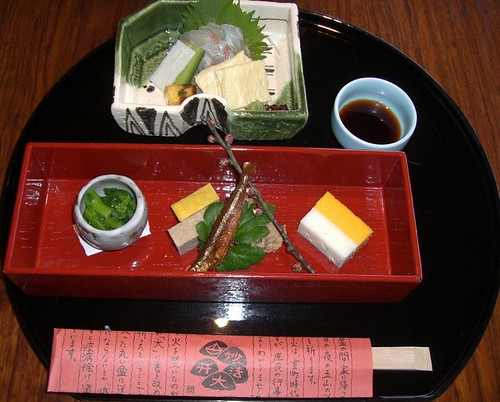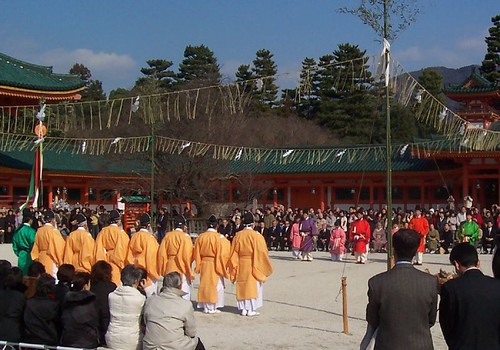Expansive intake
As I only have another few days left of my stay in Kyoto I packed in a good deal of sightseeing on Saturday. On Wednesday I will be heading off on the Shinkasen to Tokyo where I will meet with various researchers in different Universities to discuss possible projects. I will certainly miss the gentle pace of life here in Kyoto which has enabled me to get a lot of both research and background reading done - I'm not sure I could keep up this pace indefinitely however. I expect life in Tokyo to be more frenetic but from my experiences last time Ochanomizu is a very relaxed and friendly place to work.
However, Saturday was anything but gentle sightseeing, though it was very enjoyable. After an early start we headed by train to Osaka, about a half and hour from Kyoto central.
Kyoto, Osaka and Kobe blend seamlessly into one another and you are reminded starkly of the lack of usable land here in Japan. We headed up Osaka's Tsutenkaku Tower for the city view. Originally designed as an Eiffel tower on top of an Arc de Triomphe, the first version burnt down and was replaced by a 1960s take on an Eiffel tower on top of an Arc de Triomphe - This is not an astounding architectural success, but it does give a good view of the city.
We spent an hour or so seeing some of the highlights of the city including sampling the famous takoyaki, choux pastry surrounding vegetables and chunks of octopus cooked in a giant waffle-iron - highly recommended. If you find the main arcade street there will be a stall with quadruple the number of people as any other stall; it's worth the wait.
Parisian/Japanese street style:
The mossy Buddha, continually watered by worshipers:
From Osaka we took the train along the coast past the refineries, which caused such terrible problems after the Kobe earthquake (which cost over 6000 lives and 200 billion dollars of damage), and through the city of Kobe itself, on to Himeji castle, an ancient fortification of stereotypically Japanese design, though quite unlike the counterpart Medieval European castles.
I read that this castle was not only used extensively in The last Samurai and Kurasawa's Ran but it was Tiger Tanaka's Ninja training camp in You only Live Twice. It's an impressive construction and quite a startling view from below.


Back to Kobe to take in the night view from the hills overlooking the city via a walk through China town. Though I love the food here (as is beginning to show abdominally - regular swimming is losing the battle against sushi, I fear) I'm missing many Chinese dishes and baozi eaten in the street was a good reminder of treats 'back home'. 
Back to Osaka where Saturday night was beginning to rear its head and we made our way to a sushi restaurant which Tatsuya's father, a veritable epicurean by the sounds of things, had suggested. Everything from uni nigiri (a sea urchin roe/gonad treat - one of my favourites) to raw horse sushi was on the menu (though we missed the latter). Another superb meal and the best otoro I've ever eaten. One of the five exquisite plates we gobbled our way happily through:
and finally we took our weary feet and swollen bellies back to Kyoto where a planned Saturday night on the town disintegrated before our tired eyes.
Today (Sunday) has been another useful day working in a local cafe. There were festivities at the nearest temple which is currently in full plum blossom bloom. I braved the crowds for half an hour but whatever the Japanese version of a baboushka is has sharp elbows and the pushing power of a rhino and with battered mid-riff I made my escape, hoping to return in a couple of days when the crowds will have dispersed.
























